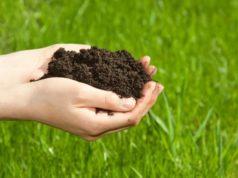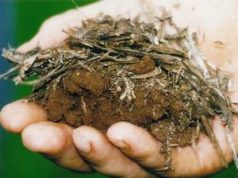Introduction
Visual plant nutrients deficiency symptoms can be a very powerful diagnostic tool for evaluating the nutrient status of plants. One should keep in mind, however, that a given individual visual symptom is seldom sufficient to make a definitive diagnosis of a plant’s nutrient status.
Many of the classic deficiency symptoms such as tip burn, chlorosis and necrosis are characteristically associated with more than one mineral deficiency and also with other stresses that by themselves are not diagnostic for any specific nutrient stress. However, their detection is extremely useful in making an evaluation of nutrient status.
In addition to the actual observations of morphological and spectral symptoms, knowing the location and timing of these symptoms is a critical aspect of any nutrient status evaluation. Plants do not grow in isolation, they are part of the overall environment and as such they respond to environmental changes as that affect nutrient availability.
Also, plants do influence their environment and can contribute to environmental changes, which in turn can affect the nutrient status of the plant.
Nutrient demand and Use-efficiency
Although, all plants of the same species respond similarly to nutrient stress, plants of similar species will often show significant differences in their nutrient use efficiency.This results from differences in growth rate, root distribution, phase of development, and efficiency of nutrient uptake and utilization.
This implies that in any given location, plants from one species may become nutrient-deficient, while those from another species growing in the same environment right next to them, may not show any deficiency symptoms.
Growth rate also affects nutrient status. When the nutrient supply is barely inadequate for growth under existing environmental conditions, many plants adjust their growth rate to match that supported by the available nutrient supply without displaying typical visual deficiency symptoms.
Agricultural systems differ from natural systems in that crop plants have been selected primarily for rapid growth under low stress conditions. This rapid growth rate results in a high nutrient demand by these plants and a higher incidence of nutrient deficiency unless supplemental fertilizers are supplied.
In agriculture systems, chronic deficiency symptoms develop mostly in crops with little or limited fertilization. Acute nutrient deficiency symptoms most often occur when new crops with a higher nutrient demand are introduced or less productive lands are brought under cultivation for the production of rapidly growing crop plants.
[indeed-social-locker sm_list=’fb,tw,go1′ sm_template=’ism_template_1′ sm_list_align=’horizontal’ sm_display_counts=’false’ sm_display_full_name=’true’ locker_template=2 sm_d_text='<h2>This premium content is locked</h2><p>Share This Page To Unlock The Content!</p>’ ism_overlock=’default’ ]
Uniformity of plant nutrients status
Not all tissues of a plant show nutrient status during times of stress. Leaves on the same plant that are exposed to different environmental conditions, (such as light), or those of different ages may have considerable differences in nutrient status. Mineral nutrients are for the most part acquired by the roots and translocated throughout the plant. The distance of any part of the plant to the roots will influence nutrient availability, particularly in the case of the less mobile nutrients. In plants recovering from nutrient deficiency, the root and conductive tissues recover first. For example, in the case of recovery from Fe-deficiency, it is common to see the veins re-green, while the interveinal tissue remains chlorotic and Fe-deficient.
In order to maintain rapid, optimal growth, all plant tissues must have a favourable nutrient status. Although, a plant may be marginally low in a number of nutrients, only one nutrient at a time will limit overall growth. However, if the supply of that limiting nutrient is increased even slightly, the resulting increase in growth will increase the demand for all other plant nutrients and another nutrient, the next lowest in availability, will become limiting.
Negative impacts of micronutrient deficiencies
Micronutrient deficiencies have the following impacts on crops
- affect yields, either directly or indirectly;
- lead to less efficient use of other essential plant nutrients;
- can trigger nitrogen losses to the environment;
- result in lower water use efficiency;
- weaken crops capacity to withstand difficult conditions;
- contain undesirable element (like cadmium) with higher risks of having non-nutritive trace elements present in edible parts.
Benefits of micro-enriched fertilization
The returns by applying micronutrient-enriched fertilizers could be huge for plant nutrients. Economists estimate very high returns in terms of health, social and economic development when micronutrient deficiencies are eliminated. A report by the World Bank and the Asian Development Bank stated that eliminating micronutrient deficiencies could:
- improve GDP by more than 5%;
- enhance the intellectual capacity of populations by more than 10%;
- enhance worker productivity by 30 to 70%;
- reduce maternal deaths by up to 50%.
Determining the need for micronutrients
Diagnosing a micronutrient deficiency can be a difficult and time consuming process. To identify some visual nutrient deficiency symptoms are given below:
- Ensure that poor crop growth is not the result of a macronutrient deficiency, drought, salinity, disease or insect problem, herbicide injury or some physiological problem.
- Find out if a micronutrient deficiency has been identified before in a particular crop or soil type in the area.
- Examine the affected crop for specific micronutrient deficiency symptoms.
- Take separate soil samples from both the affected and unaffected areas for complete analysis, including micronutrients.
- Send plant tissue samples from both the affected and unaffected areas for complete analysis that includes tests for micronutrient levels.
- If all indications point to a micronutrient deficiency, apply the micronutrient to a specific, clearly marked out affected area of land to observe results in subsequent seasons.
Nitrogen

Due to nitrogen deficiency leaves show chlorotic symptoms. A light red cast can also be seen on the veins and petioles. Under nitrogen deficiency, the older mature leaves gradually change from their normal characteristic green appearance to a much paler green. As the deficiency progresses these older leaves become uniformly yellow (chlorotic). Leaves approach a yellowish white color under extreme deficiency. The young leaves at the top of the plant maintain a green but paler color and tend to become smaller in size. Branching is reduced in nitrogen deficient plants resulting in short, spindly plants. The yellowing in nitrogen deficiency is uniform over the entire leaf including the veins. However in some instances, an interveinal necrosis replaces the chlorosis commonly found in many plants. In some plants the underside of the leaves and/or the petioles and midribs develop traces of a reddish or purple colour. In some plants, this colouration can be quite bright. As the deficiency progresses, the older leaves also show more of a tendency to wilt under mild water stress and become senescent much earlier than usual. Recovery of deficient plants to applied nitrogen is immediate (days) and spectacular.
Phosphorus
Phosphorus deficient leaves show some necrotic spots. As a rule, phosphorus deficiency symptoms are not very distinct and thus difficult to identify. A major visual symptom is that the plants are dwarfed or stunted. Phosphorus deficient plants develop very slowly in relation to other plants growing under similar environmental conditions but without phosphorus deficiency. Phosphorus deficient plants are often mistaken for unstressed but much younger plants. Some species such as tomato, lettuce, corn and the brassicas develop a distinct purpling of the stem, petiole and the under sides of the leaves. Under severe deficiency conditions there is also a tendency for leaves to develop a blue-gray luster. In older leaves, under very severe deficiency conditions, a brown netted veining of the leaves may develop.
Potassium
Some of leaves show marginal necrosis (tip burn), others at a more advanced deficiency status show necrosis in the interveinal spaces between the main veins along with interveinal chlorosis. This group of symptoms is very characteristic of K-deficiency symptoms. The onset of potassium deficiency is generally characterized by a marginal chlorosis progressing into a dry leathery tan scorch on recently matured leaves. This is followed by increasing interveinal scorching and/or necrosis progressing from the leaf edge to the midrib as the stress increases. As the deficiency progresses, most of the interveinal area becomes necrotic, the veins remain green and the leaves tend to curl and crinkle. In some plant such as legumes and potato, the initial symptom of deficiency is white speckling or freckling of the leaf blades. In contrast to nitrogen deficiency, chlorosis is irreversible in potassium deficiency, even if potassium is given to the plants. Because potassium is very mobile within the plant, symptoms only develop on young leaves in the case of extreme deficiency. Potassium deficiency can be greatly alleviated in the presence of sodium but the resulting sodium-rich plants are much more succulent than a high potassium plant. In some plants over 90% of the required potassium can be replaced with sodium without any reduction in growth.
Calcium

Calcium-deficient leaves show necrosis around the base of the leaves. The very low mobility of calcium is a major factor determining the expression of calcium deficiency symptoms in plants. Classic symptoms of calcium deficiency include blossom-end rot of tomato (burning of the end part of tomato fruits), tip burn of lettuce, blackheart of celery and death of the growing regions in many plants. All these symptoms show soft dead necrotic tissue at rapidly growing areas, which is generally related to poor translocation of calcium to the tissue rather than a low external supply of calcium. Very slow growing plants with a deficient supply of calcium may re-translocate sufficient calcium from older leaves to maintain growth with only a marginal chlorosis of the leaves. This ultimately results in the margins of the leaves growing more slowly than the rest of the leaf, causing the leaf to cup downward. This symptom often progresses to the point where the petioles develop but the leaves do not, leaving only a dark bit of necrotic tissue at the top of each petiole. Plants under chronic calcium deficiency have a much greater tendency to wilt than non-stressed plants.
Magnesium

The Mg-deficient leaves show advanced interveinal chlorosis, with necrosis developing in the highly chlorotic tissue. In its advanced form, magnesium deficiency may superficially resemble potassium deficiency. In the case of magnesium deficiency the symptoms generally start with mottled chlorotic areas developing in the interveinal tissue. The interveinal laminae tissue tends to expand proportionately more than the other leaf tissues, producing a raised puckered surface, with the top of the puckers progressively going from chlorotic to necrotic tissue. In some plants such as the Brassica (The mustard family, which includes vegetables such as broccoli, brussel sprouts, cabbage, cauliflower, collards, kale, kohlrabi, mustard, rape, and turnip.), tints of orange, yellow, and purple may also develop.
Sulphur
This leaf shows a general overall chlorosis, while still retaining some green colour. The veins and petioles show a very distinct reddish colour. The visual symptoms of sulphur deficiency are very similar to the chlorosis found in nitrogen deficiency. However, in sulphur deficiency the yellowing is much more uniform over the entire plant including young leaves. The reddish colour often found on the underside of the leaves and the petioles has a more pinkish tone and is much less vivid than that found in nitrogen deficiency. With advanced sulphur deficiency brown lesions and/or necrotic spots often develop along the petiole, and the leaves tend to become more erect and often twisted and brittle.
Zinc
Leaves show an advanced case of interveinal necrosis. In the early stages of zinc deficiency, the younger leaves become yellow and pitting develops in the interveinal upper surfaces of the mature leaves. Guttation is also prevalent. As the deficiency progresses, these symptoms develop into an intense interveinal necrosis but the main veins remain green, as in the symptoms of recovering iron deficiency. In many plants, especially trees, the leaves become very small and the internodes shorten, producing a rosette like appearance.
Manganese
These leaves show a light interveinal chlorosis developed under a limited supply of Mn. The early stages of the chlorosis induced by manganese deficiency are somewhat similar to iron deficiency. They begin with a light chlorosis of the young leaves and netted veins of the mature leaves especially when they are viewed through transmitted light. As the stress increases, the leaves take on a gray metallic sheen and develop dark freckled and necrotic areas along the veins. A purplish luster may also develop on the upper surface of the leaves. Grains such as oats, wheat, and barley are extremely susceptible to manganese deficiency. They develop a light chlorosis along with gray specks which elongate and coalesce, and eventually the entire leaf withers and dies.
Iron

Iron-deficient leaves show strong chlorosis at the base of the leaves with some green netting. The most common symptom for iron deficiency starts out as an interveinal chlorosis of the youngest leaves, evolves into an overall chlorosis, and ends as a totally bleached leaf. The bleached areas often develop necrotic spots until the leaves become almost completely white. They will recover upon application of iron. In the recovery phase the veins are the first to recover as indicated by their bright green colour. This distinct venial re-greening observed during iron recovery is probably the most recognizable symptom in all of classical plant nutrition. Because iron has a low mobility, iron deficiency symptoms appear first on the youngest leaves. Iron deficiency is strongly associated with calcareous soils and anaerobic conditions, and it is often induced by an excess of heavy metals.
Copper
Copper-deficient leaves are curled, and their petioles bend downward. Copper deficiency may be expressed as a light overall chlorosis along with the permanent loss of turgor in the young leaves. Recently, matured leaves show netted, green veining with areas bleaching to a whitish gray. Some leaves develop sunken necrotic spots and have a tendency to bend downward. Trees under chronic copper deficiency develop a rosette form of growth. Leaves are small and chlorotic with spotty necrosis.
Chloride
Leaves have abnormal shapes, with distinct interveinal chlorosis. Plants require relatively high chlorine concentration in their tissues. Chlorine is very abundant in soils, and reaches high concentrations in saline areas, but it can be deficient in highly leached inland areas. The most common symptoms of chlorine deficiency are chlorosis and wilting of the young leaves. The chlorosis occurs on smooth flat depressions in the interveinal area of the leaf blade. In more advanced cases, there often appears a characteristic bronzing on the upper side of the mature leaves. Plants are generally tolerant of chloride, but some species such as avocados, stone fruits, and grapevines are sensitive to chlorine and can show toxicity even at low chloride concentrations in the soil.
Boron
Boron deficient leaves show a light general chlorosis. The tolerance of plants to boron varies greatly, to the extent that the boron concentrations necessary for the growth of plants having a high boron requirement may be toxic to plants sensitive to boron. Boron is poorly transported in the phloem of most plants, with the exception of those plants that utilize complex sugars, such as sorbitol, as transport metabolites. In plants with poor boron mobility, boron deficiency results in necrosis of meristematic tissues in the growing region, leading to loss of apical dominance and the development of a rosette condition. These deficiency symptoms are similar to those caused by calcium deficiency. In plants, in which boron is readily transported in the phloem, the deficiency symptoms localize in the mature tissues, similar to those of nitrogen and potassium. Both the pith and the epidermis of stems may be affected, often resulting in hollow or roughened stems along with necrotic spots on the fruit. The leaf blades develop a pronounced crinkling and there is a darkening and crackling of the petioles often with exudation of syrupy material from the leaf blade. The leaves are unusually brittle and tend to break easily. Also, there is often a wilting of the younger leaves even under an adequate water supply, pointing to a disruption of water transport caused by boron deficiency.
Molybdenum
These leaves show some mottled spotting along with some interveinal chlorosis. An early symptom for molybdenum deficiency is a general overall chlorosis, similar to the symptom for nitrogen deficiency but generally without the reddish colouration on the undersides of the leaves. These results from the requirement for molybdenum in the reduction of nitrate, which needs to be reduced prior to its assimilation by the plant. Thus, the initial symptoms of molybdenum deficiency are in fact those of nitrogen deficiency. However, molybdenum has other metabolic functions within the plant, and hence, there are deficiency symptoms even when reduced nitrogen is available. In the case of cauliflower, the lamina of the new leaves fail to develop, resulting in a characteristic whiptail appearance. In many plants, there is an upward cupping of the leaves and mottled spots developing into large interveinal chlorotic areas under severe deficiency. At high concentrations, molybdenum has a very distinctive toxicity symptom in that the leaves turn a very brilliant orange.
Conclusions
If micronutrient deficiencies that constrain high productivity are not identified, monitored, and alleviated, the fertilizer use efficiency of costly chemical fertilizers and other agricultural inputs will be markedly reduced. The projected micronutrient demand for 2025 in India is expected to increase by five to 10 times the present consumption level. This would entail the use of fertilizer nutrients in the right proportion, with efficient application methods and at the appropriate time of crop growth. Also, it is essential to augment the availability of native nutrients by modifying soil environment through management practices in different crops and cropping systems. Some farmers have applied micronutrients in the hope of increasing crop yields even though there is little evidence to suggest a deficiency exists. There is still a widespread lack of awareness by farmers for the importance of micronutrients in crop production. Also, a continuous research and testing is required to identify when various crops will give an increase in economic yield due to addition of micronutrient fertilizers.
Contributed By:
Sushant Tiwari*, Parshant Bakshi**, C.P. Tiwari and Susheel Kumar
*Department of Agriculture Chemistry and Soil Science, Narain College, Shikohabad (U.P.)
** Assistant Professor, Division of Fruit Science, SKUAST-Jammu.
[/indeed-social-locker]








